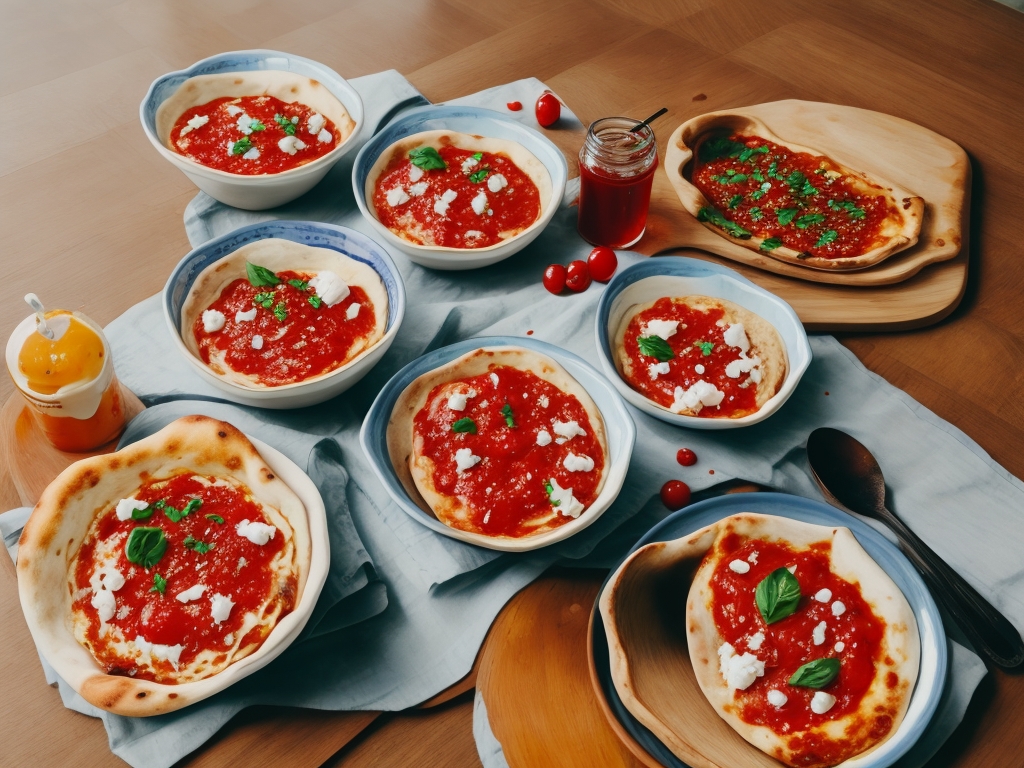Domino’s pizza sauce is known for its robust flavor that strikes a balance between tangy and sweet. It enhances the pizza’s flavor with a rich tomato base complemented by herbs and spices. The dominos pizza sauce recipe acts as the foundation of dominos pizza, influencing its flavor profile and texture. Domino’s has perfected its sauce recipe over the years, making it a crucial element in their pizzas’ popularity.
Common Mistakes to Avoid
- Pitfalls in making Domino’s pizza sauce at home
Even with a straightforward recipe, pitfalls exist that can affect the sauce’s taste and texture:
- Overcooking the sauce: Effects on flavor
Extended cooking times can intensify flavors but may also lead to a bitter aftertaste. Maintain a gentle simmer to preserve the sauce’s freshness.
- Incorrect herb ratios: Impact on taste
Using too much or too little of certain herbs can alter the sauce’s intended flavor. Follow the recipe guidelines and adjust to taste preferences.

Key components of Domino’s pizza sauce
Ingredients
- Tomatoes: The base of the sauce Using ripe, fresh tomatoes is ideal for achieving the right balance of acidity and sweetness. Canned tomatoes are also a convenient alternative, often used in large-scale production for consistency.
- Herbs and spices: Infusing flavor A blend of herbs like oregano, basil, and thyme, along with garlic and onion powders, gives the sauce its distinctive taste. These ingredients are crucial for replicating Domino's signature flavor at home.
- Sweeteners and acidity adjusters To balance the acidity of tomatoes, Domino's uses sugar and a touch of vinegar. These ingredients help achieve the sauce's characteristic tanginess without overwhelming the palate.
Preparing Your Ingredients
- Sourcing fresh tomatoes versus canned tomatoes
The choice between fresh and canned tomatoes depends on personal taste and availability. Fresh tomatoes offer a vibrant, seasonal flavor, while canned tomatoes provide consistency throughout the year.
- Pros and cons of each option
Fresh tomatoes are prized for their natural sweetness and acidity but require peeling and seeding. Canned tomatoes are convenient and often cooked before canning, enhancing their flavor and ease of use.
- Selecting the right herbs and spices
Herbs can be used depends on availability. Opt for fresh herbs when possible for a more vibrant flavor, but dried herbs work well too, especially when simmered in the sauce.
- Recommended herbs and their roles
- Oregano: Adds a robust, earthy flavor.
- Basil: Offers a sweet, slightly peppery taste.
- Thyme: Provides a subtle, floral note.
- Garlic and onion powders: Enhance the savory profile of the sauce.
Cooking Process of
Step-by-step guide to cooking the sauce
Creating Domino’s pizza sauce recipe involves a straightforward cooking process.
- Sautéing aromatics: Start by gently cooking minced garlic and onions in olive oil till fragrant.
- Adding tomatoes: Incorporate crushed tomatoes (freshly diced or canned) and simmer over low heat.
- Seasoning: Add herbs, spices, sugar, and vinegar gradually, adjusting to taste.
- Simmering versus rapid boiling: Which is better?
- Simmering: Allows flavors to meld slowly, resulting in a richer sauce.
- Rapid boiling: Can reduce the sauce quickly but risks losing some delicate flavors.
- Adjusting the thickness and consistency
To achieve Domino’s preferred consistency, simmer the sauce until it thickens slightly. Stir occasionally to prevent sticking and adjust with water or tomato paste as needed.
- Tips from Domino’s chefs
Domino’s chefs recommend tasting the sauce throughout the cooking process and adjusting seasoning to achieve the desired flavor profile. This courtesy to detail confirms each batch of sauce meets their high standards.
Secret Techniques for Flavor Enhancement
- Tricks to mimic Domino’s signature taste
Replicating Domino’s sauce requires attention to detail and the following techniques:
- The role of garlic and onion powders
Balancing these flavors enhances the sauce’s depth without overwhelming the tomato base.
- Balancing sweetness and tanginess
Domino’s achieves its distinctive tanginess with a precise blend of sugar and vinegar. Adding these ingredients gradually allows you to adjust the sauce’s flavor to your liking.
- Using sugar and vinegar effectively
Start with minor amounts and taste as you go. This method helps achieve a harmonious balance without making the sauce overly sweet or sour.
Alternative Ingredients and Substitutions
- Vegan and gluten-free options
For dietary preferences, consider these substitutes:
- Catering to dietary preferences
- Vegan: Ensure all ingredients are plant-based and free from animal products.
- Gluten-free: Use certified gluten-free herbs and spices.
Using substitutes for unavailable herbs and spices
If certain herbs are unavailable, consider these alternatives:
Maintaining the essence of the sauce
- Oregano: Substitute with marjoram or thyme.
- Basil: Use parsley or cilantro in a pinch.
- Garlic and onion powders: Fresh minced garlic and onions can be used instead.
Storage and Preservation Tips
- How long can homemade pizza sauce last?
Proper storage extends the sauce’s shelf life.
Refrigeration versus freezing
- Refrigeration: stock in an airtight bottle (for one week.)
- Freezing: Portion into freezer-safe containers for up to three months.
Best containers for storing sauce
Use glass jars or BPA-free plastic containers to maintain freshness and prevent flavors from leaching into the sauce.
Expand your culinary horizons with these ideas.
- Dips, marinades, and pasta sauces
Use Domino’s sauce as a flavorful dip for breadsticks or as a base for homemade pasta sauces and marinades.
- Recipes that feature Domino’s sauce as a key ingredient
Experiment with new dishes like chicken parmesan or baked ziti, incorporating Domino’s sauce for added depth of flavor.
Health Benefits of Homemade Sauce
Homemade sauce offers these benefits:
Control the sodium content and avoid preservatives by making your own sauce at home.
Enhance your meals with fresh, vibrant ingredients that contribute to a healthier eating lifestyle.
Mastering Dominos pizza sauce recipe at home
By following these steps and tips, you can recreate Domino’s pizza sauce in your own kitchen, tailored to your taste preferences. Experiment with different herb ratios and cooking techniques to achieve the perfect sauce for your homemade pizzas and beyond.
FAQs
1. Is it essential to use fresh tomatoes for the sauce? Fresh tomatoes are ideal, but canned tomatoes can also yield good results if chosen wisely.
2. Can I adjust the spice level of the sauce to my preference? Absolutely! Experiment with different herb and spice combinations until you find your perfect balance.
3. How can I achieve the signature tanginess of Domino’s sauce?
A blend of sugar and vinegar, added gradually, helps achieve the desired tangy flavor.
4. Can I freeze leftover pizza sauce?
Yes, freezing is a great way to preserve homemade sauce for future use. Store it in airtight containers for best results.
5. What other dishes can I make with Domino’s pizza sauce besides pizza?
You can use it for pasta dishes, as a dipping sauce for breadsticks, or even as a marinade for grilled meats.


